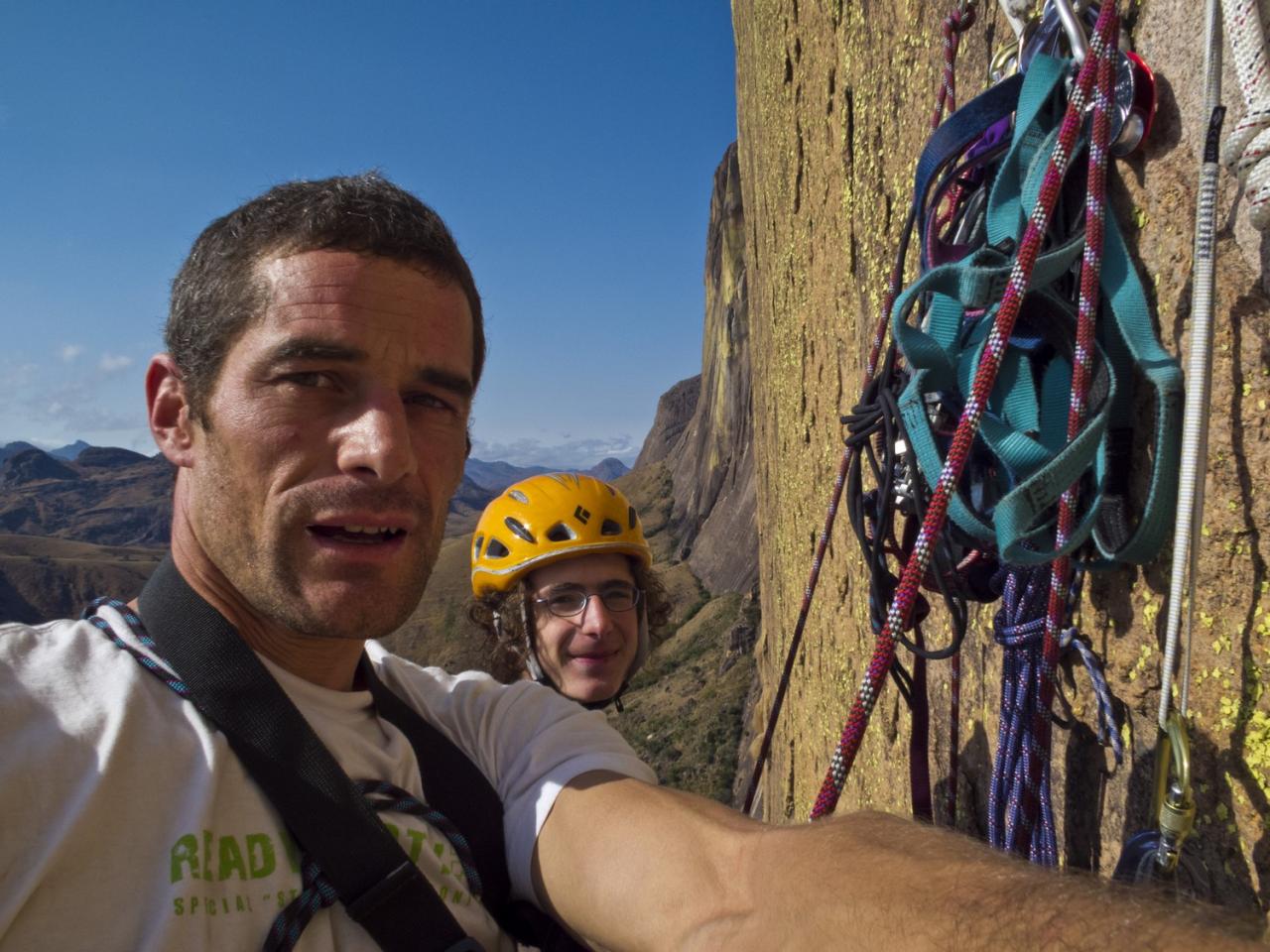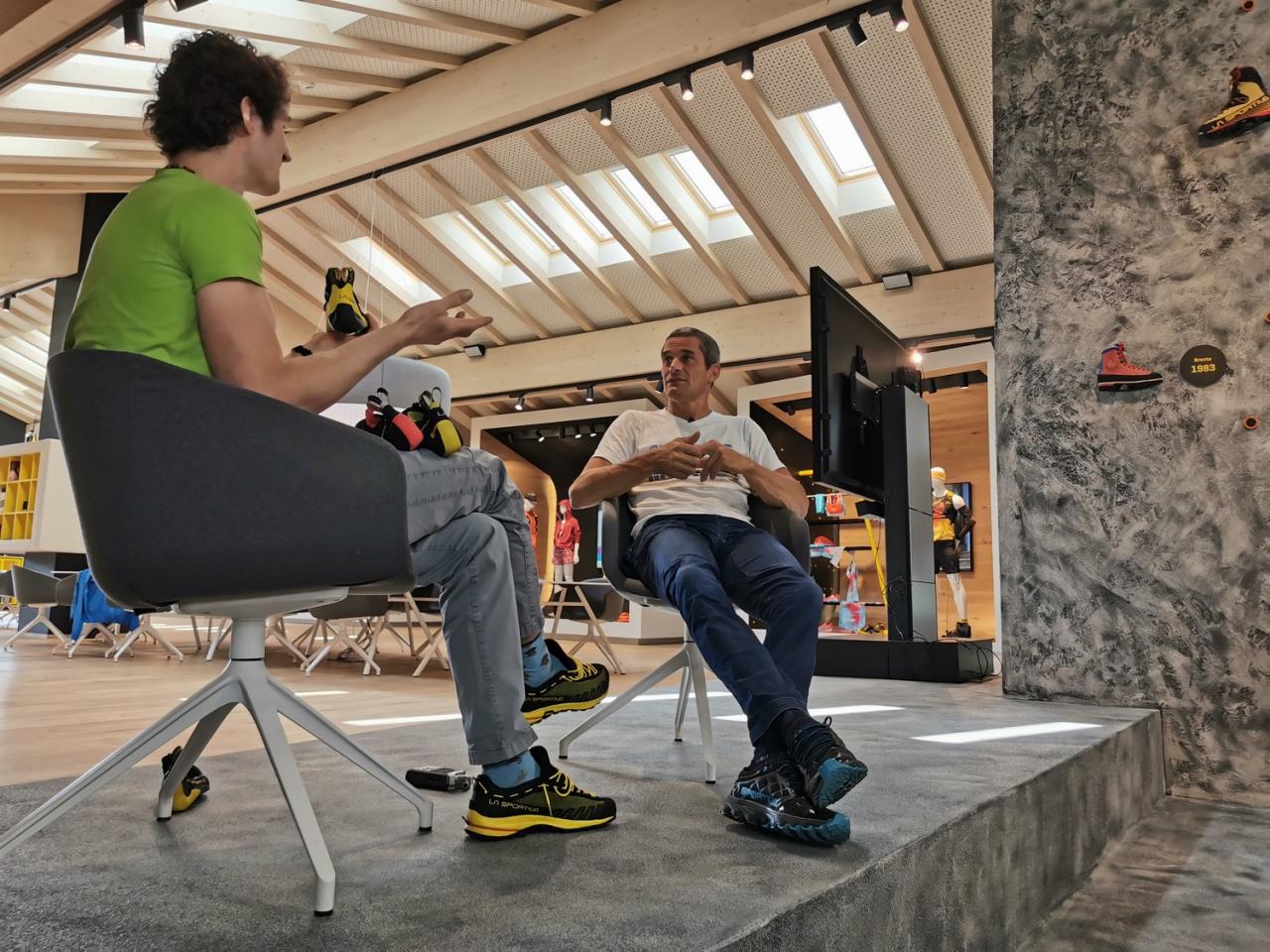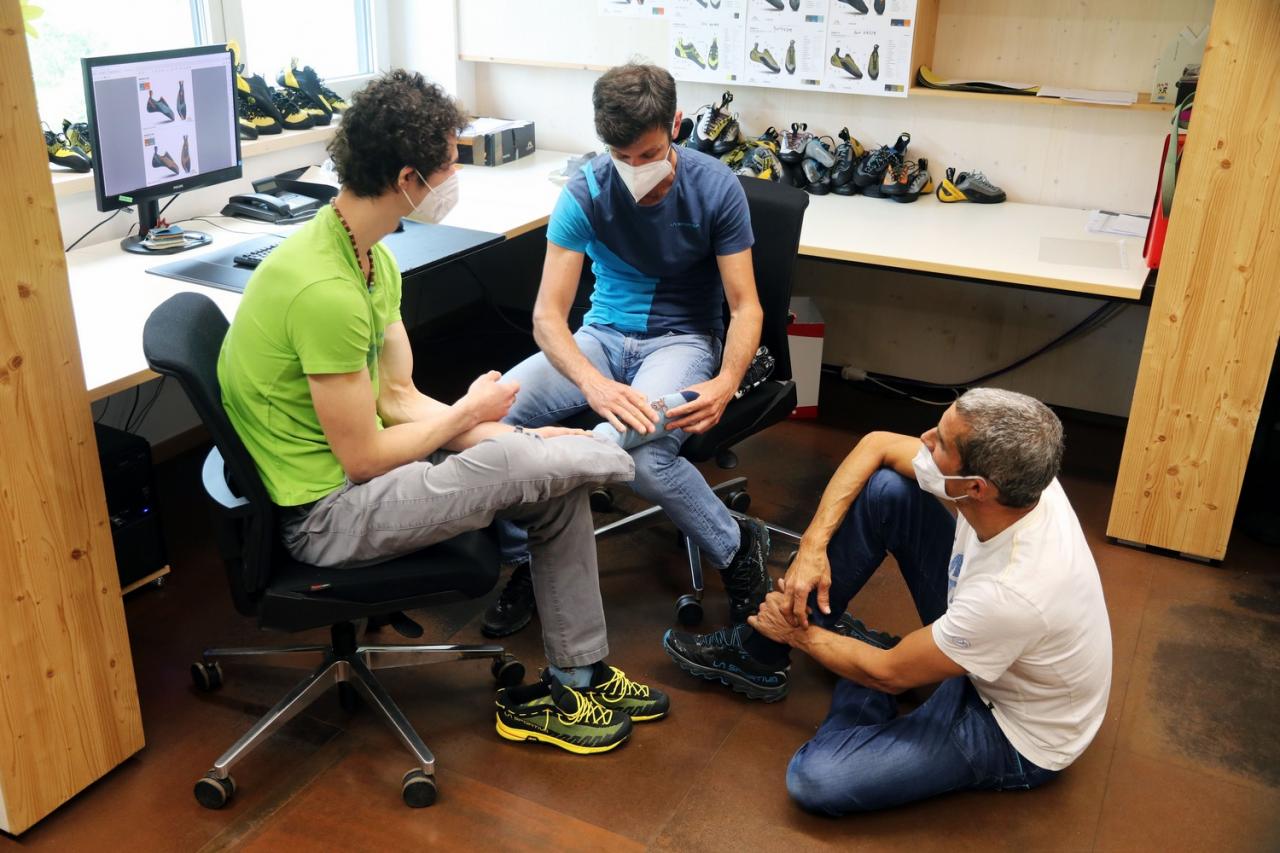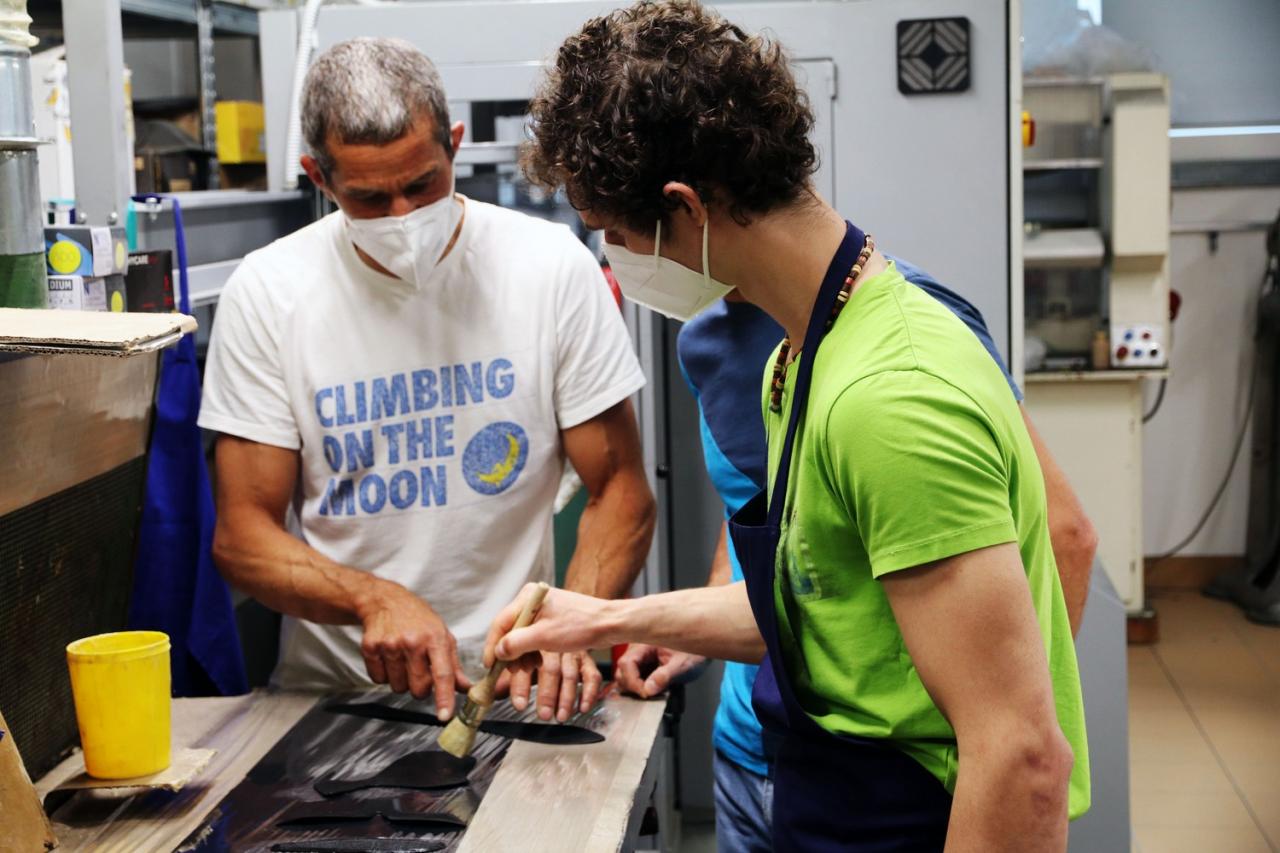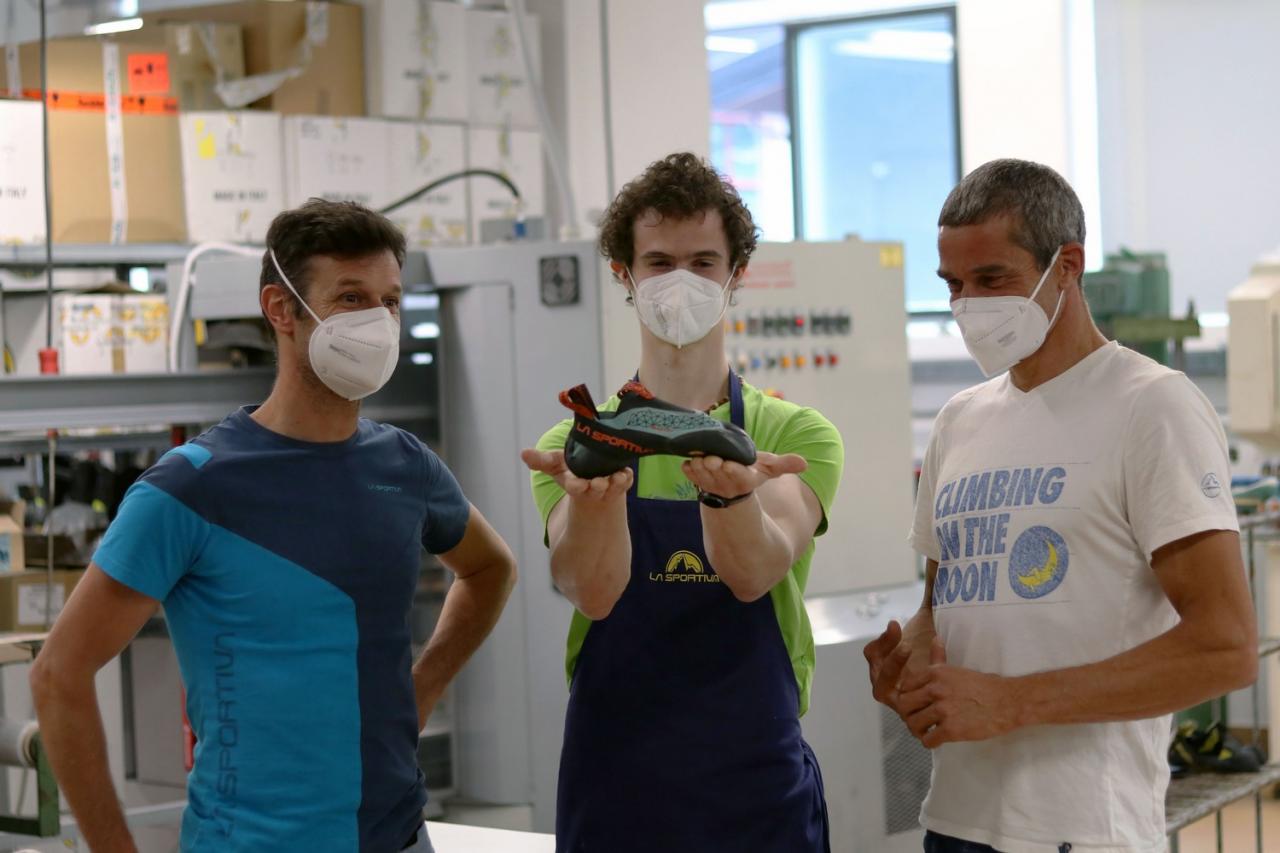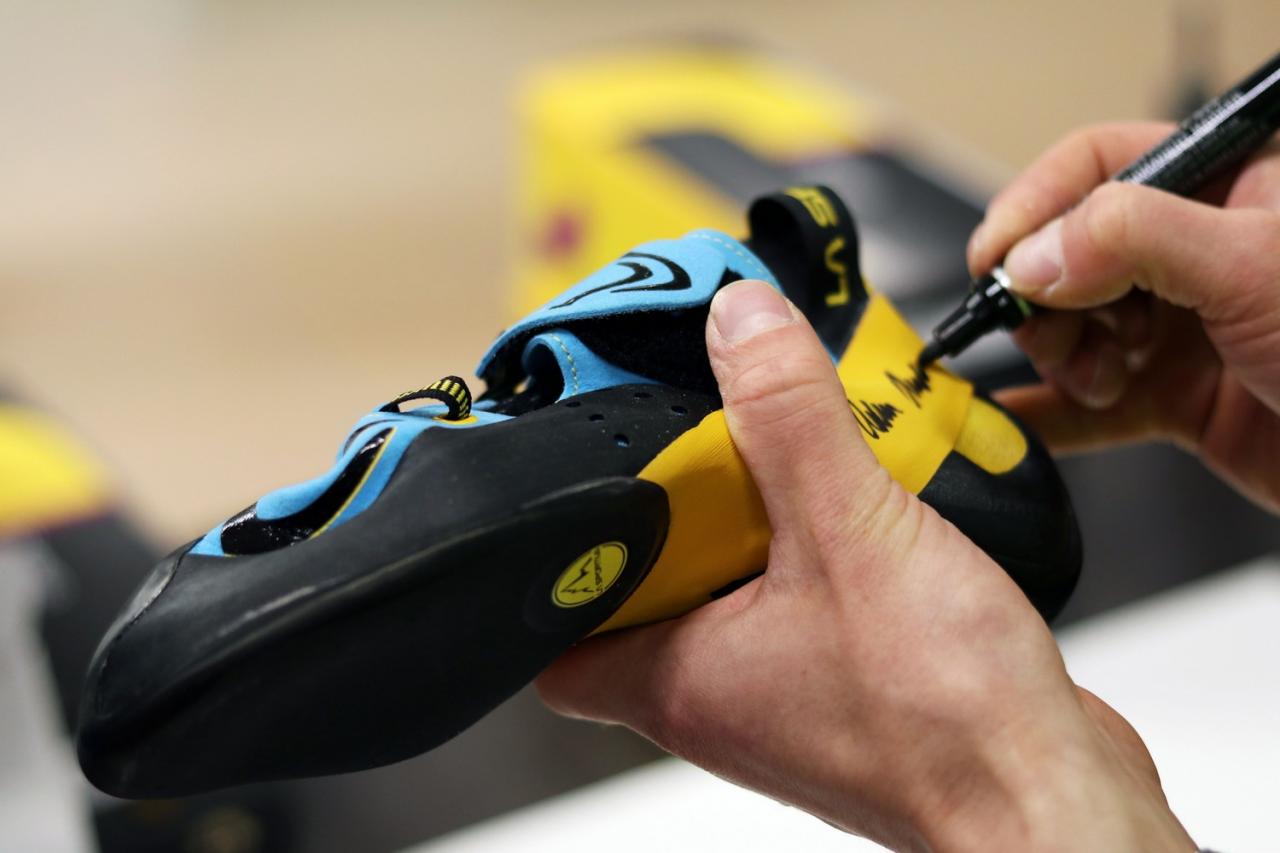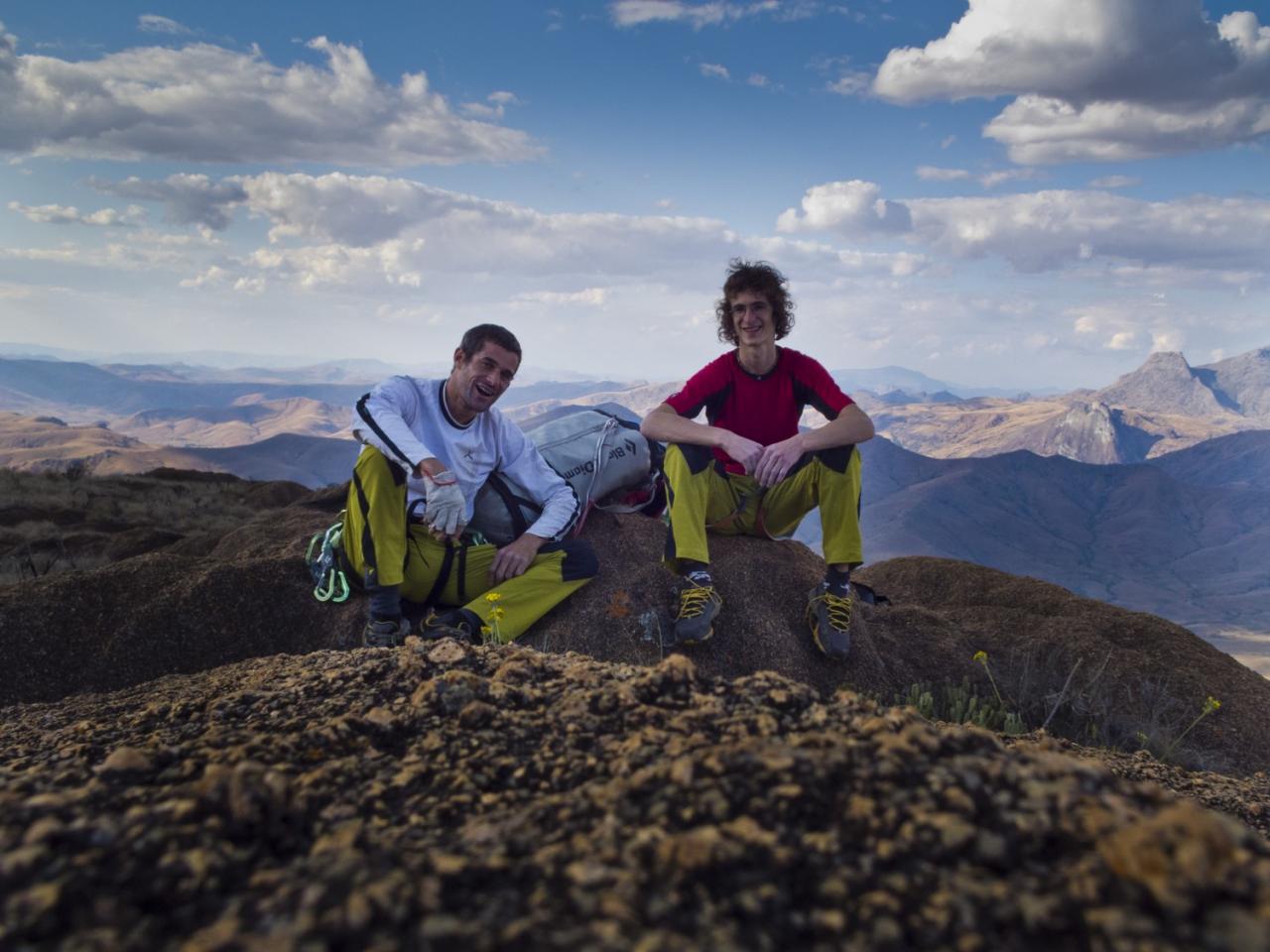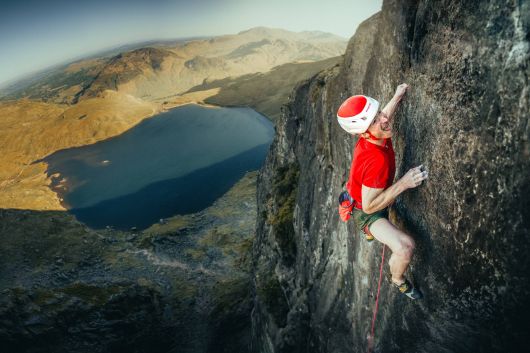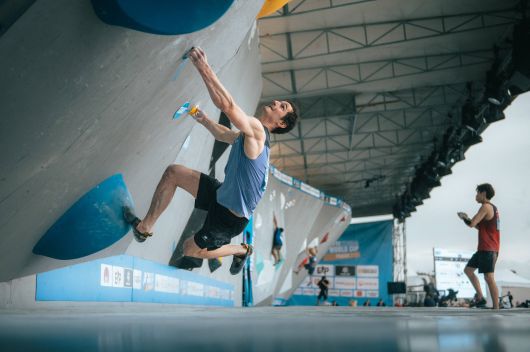Adam Ondra chats with Pietro Dal Pra in La Sportiva
Created by: Adam Ondra2021/07/07
June 8, 2021, Val di Fiemme, La Sportiva headquarters. I visited La Sportiva’s factory to witness (and try for myself!) the production of climbing shoes. Afterwards, Pietro Dal Pra and I went to sit down in the spacious lobby and talk about climbing in general, climbing tools, and especially climbing shoes. I enjoyed the friendly chat with him. Let's read the part of our conversation focusing on the three models from La Sportiva which I’m gonna use at the Olympics. This is a part of the talk that Adam had with Pietro dal Pra in Val di Fiemme - La Sportiva headquarters. Enjoy!
A: I think, out of all the tools that every climber needs, climbing shoes is the one that really defines you as a climber.
P: I think that the climbing shoe is almost more than a tool. And compared to the other tools, it‘s more part of you. Your harness, quickdraws, the rope... they are somehow external to you. The climbing shoe is part of your foot. That‘s why, when I wear a climbing shoe, I start to feel, to imagine, to dream, to expect climbing because I start to feel the pleasure of climbing.
A: I think climbing is ultimately about finding freedom of your expression while you’re on the wall. And without those powerful tools, so many routes would be impossible! It gives you the confidence that the tiny foothold is actually a foothold, and you’re comfortable while placing your foot on that tiny foothold. And thanks to that, you feel free!
P: You feel free, yes! But maybe we should train more like Albert, the barefoot climber. (both smile) I always think that the maximum expression of climbing would be climbing barefoot.
A: I think it’s really important that if you go with your foot into the shoe, the foot doesn’t feel like in prison. Yes, it’s supported, but it’s free to move.
P: Yes. That’s why I was insisting with you for a long time that shoes too small are not that good for climbing. You have to leave a little bit of movement in between the bones of the foot, to leave it working, and you’ll achieve more fluent climbing.
A: Essentially, climbing shoes are made of leather, micro fibers, and rubber?
P: Yes. And sometimes, a piece of plastic for the inner sole. Of course, it’s easier to have stable quality of artificial materials (like micro fiber or rubber) than natural materials (like leather). That’s why we have a dynamometer to measure the thickness and elasticity of the leather. We also have some guys who have been working here for 40 years and they just touch the leather. And they can distinguish the quality of it.
A: So why is it that important to stick to the leather instead of using just artificial materials?
P: Because leather has some qualities that artificial materials don’t have. For example, if you sweat into the micro fiber, it tends to maintain the moisture. With leather, the humidity goes away. Also, the leather is unstretchable in a certain direction. So if you climbed in shoes made from microfiber, the shoe would enlarge a bit with each foothold.
P: There are many secrets. I have to stop here or that would be too many secrets about the construction of climbing shoes! (laughs)
A: So, the Olympic Games are approaching and we have three shoes that I’ll be using at the Games, based on the three disciplines for the combined format. (There are three models of climbing shoes lying on the floor and Adam reaches for one of them.) First, there will be speed and we have Cobra 4.99 for that.
P: (Takes the shoe out of Adam’s hand and hides it behind his back.) You want me to hide it? (Note: To put it mildly, Adam isn’t a big fan of speed climbing :))
A: (both laugh) Well...I would be happy if I didn’t have to use them. But the speed will be at the Olympics, so I’ll have to.
P: It is the only shoe that is completely specific for that discipline. You couldn’t use it for anything else, but speed
A: It has a super light heel.
P: No friction!
A: It’s useless for heel hooking because you don’t need it while speed climbing.
P: Yes, and you have a layer on the upper part which prevents the shoe to be damaged there. Because when you do speed climbing, you hit the footholds and the wall with your toes many times. It’s made from microfiber, which adapts better. When you do speed, you don’t need a tight shoe. You need an adaptable shoe. It’s something that is designed purely to be fast. That’s why the name.
A: Ideally, sub-5. Which, I think, is gonna happen pretty soon. Last week, there was a record 5.21, I think. And it was actually done in these shoes!
P: When we decided about the name for Cobra 4.99, everybody was like, “What, 4.99?” Me too! But the climbers are going towards there! (both laugh)
A: I’d say they’re not climbing shoes but running shoes. When you want to go sub-5 on the 15-meter-high wall, you need to be running, not climbing.
Adam puts Cobra 4.99 aside and looks at the two remaining shoes on the floor.
A: Then, for bouldering, I’m using Theory, and for lead, Solution Comp.There are certain qualities that make them ideal for these disciplines.
P: Yes. When you build a climbing shoe, you always have to find a compromise between two qualities - supporting the weight of the climber and stiffness, or adaptability. That’s the capacity of the shoes to adapt to all different shapes of the footholds. (Takes the Theory shoe, points to the toe part of its outsole, and explains.) This is super, super, soft. It is one of the two shoes in La Sportiva which even doesn’t have a plastic midsole, just rubber, so it adapts very well. Also to a large surface. And you know that modern style of climbing is done on big volumes.
A: That’s the trend. On the bouldering competitions, you rarely step on something tiny. It’s usually big and slippery, so you have to use the whole surface of this part of the shoe (points to the toe part of the outsole) to make it stick. Because it’s soft, it’s difficult to stay on something tiny, unless your toes are super strong…
P: Or you are very light.
A: Yeah. But thanks to the softness, you can really feel it.
P: And I’d like to say something more about Theory because this is absolutely new. I was talking about the compromise between supporting and adapting. I think that Theory offers the best compromise because we have a completely new sole that is 3.5 mm thick from here to here (points to the toe-tips part of the outsole). Then in about 1 cm, it goes from 3.5 mm down to 1.6 (taps on the outsole slightly further from the toe tips). This means that at the toe tips, you have the capacity of being powerful on small stuff, but the rest of the toe is super soft. That’s why I say it’s a very good compromise between supporting and adapting, which is what usually happens in bouldering.
(grabs Solution Comp shoe) This has always had that compromise, but it’s stiffer. So it’s more supporting, compared to the Theory.
A: I’d say, Solution Comp is the choice for lead climbing for me because it was born from the normal Solution – La Sportiva’s absolute blockbuster. It has been here for…15 years?
P: Since 2007. (Which means 14 years. Impressive knowledge, Adam! :))
A: Incredible!
P: (smiles and nods) Incredible.
A: The normal Solution is a relatively stiff shoe. Solution Comp is slightly softer, which makes it easier to step on bigger volumes, which happens more and more frequently even on lead climbing competitions. But it still has this aggressive, downturn shape, so it’s possible to feel tiny, incut edges on steep routes as well.
P: Yes. It’s the evolution of the normal Solution, which was born in 2007, so…(counting in his head)…14 years ago. This was the evolution we had to do, regarding the evolution of climbing. But I want to underline, sometimes we give advice on what the best terrain for a certain model is. But I’m aware this is just advice. It’s not wrong, of course, but every climber needs to decide on their own.
A: But in general, there could be some guidelines that the lighter you are, the softer shoes you should be picking.
P: Yes. And if you’re climbing on a vertical wall, you need stiff shoes, but if you climb in the overhang, you need softer shoes. And this is very important for us, in La Sportiva. This is a concept I always try to pass on. You know that we have the models in male and female models. I have the female version of the Solution Comp and the Theory here. (Takes both shoes from the floor. Then he passes the female version of the Solution Comp to Adam, so Adam is holding both male and female versions in his hands.) You know what the differences are, right?
A: Yeah.
P: Come on! (both smile)
A: Subjectively, the female version feels softer. In general.
P: That’s it! There’s nothing more. The volume and the construction is exactly the same. The only thing is, that in the female version, we use thinner or softer materials. It means that a 50-kilo climber feels the same in the female model as a 70-kilo climber in the male model. That’s why I understand when I sometimes see you climbing in the female version. You just need softer shoes, but it feels the same on your foot.
We are 100 % sure about our decision to have the same volume. Every sports doctor told us there is no difference between the volumes of the feet of men and women, after 2 or 3 years of practising a certain sport. So it’s more of a difference in the weight
If we did different volumes, that would make more sense in building shoes for different races. We know perfectly that South and North Americans have a wider foot than Europeans. Populations that were used to walking barefoot, like Africans, have very wide feet too.
With all the things we said, you understand that it’s difficult to give the right advice to somebody you don’t know. There are so many variations!
A: Yes. What is the best shoe in the world, for example? (Pietro throws up his hands, rolls his eyes, and Adam laughs.) Even the best shoes for me...there is no correct answer! There might be a possible answer for one style of climbing.
P: Yes. When they ask me what my favorite shoe is, I always have to say two or three models. The only general advice is that if you can buy more than one pair, buy two pairs that are completely different. One stiff model to improve your precision, and one soft model to learn how to be faster, more fluent, and how to improvise. That goes for an intermediate climber.
A: What would you tell a beginner?
P: Wear something comfortable. Don’t go for much smaller shoes than your actual size is. It can be your size but slightly stiffer. And after 2 or 3 months, you can try smaller and softer shoes. And then again and again. Because when you feel pain, you’re not able to use your head anymore. I really want people to go on with climbing. When I realize they don’t go climbing anymore because of the pain, I prefer to say, “Okay, stiffer shoes and have fun!“
A: I’d also like to get to resoling the shoes. I climb almost every day and I consume 12 or 14 pairs a year. That’s a lot.
P: I thought more!
A: It’s not only a lot of money, but also environmentally…
P: Yeah, I really like that you try to resole your shoes.
A: The good thing is that it’s not only good for the environment, but it could actually be a better shoe. It could perform better!
P: I think, after the first resoling, you’ll have the best shoes you can get. Because the upper part already has the shape of your foot, it’s already a bit softer, and we resole the sole. We are really pushing, as a company, in the direction of resoling. Because environmentally…we have to do it.
A: Maybe a good advice would be to send it for resoling before it’s completely destroyed.
P: This is a very good point, actually. Many climbers would like to save some money, so they climb a little bit more, and a little bit more, and so on. But in the end, they would have saved more money if they had sent the shoe to be resoled earlier.
(Then, after a short time, Adam and Pietro try to recall Adam’s first visit of La Sportiva.)
A: First time I was in La Sportiva, I was 13 years old. I barely spoke English.
P: (nods and smiles) I remember.
A: And besides meeting the boss, Lorenzo, I also met you. And you were, back then, not working on the new shoes, but you were an athlete manager, right?
P: I was the athlete manager, yes! (bursts into laughter) It was a hard time, I was an athlete too! You came with your parents, a very tall kid, a little bit shy, but very polite, wearing glasses…
(Pietro hesitates and turns to the camera man.) Is it possible for me not to talk to Adam now? Because if I talk about you (looks at Adam), it’s better if I say it to someone else.
(So, after a short while of arrangements, shuffling chairs, and moving the camera man, Pietro continues and gives a really nice speech about Adam. Hopefully, it won’t seem too much as boasting, but it was so natural that we decided to publish this nice ending of their chat too.)
So he came here with his parents, not many words... But only after a few words, I could tell he was determined, focused on, and in love with climbing.
We also went climbing a few times together. Several multi-pitch routes. I liked the fact that even though he was super famous, we could be silent and in an intimate situation. It was like a deal between us. Like, “Ok, we go climbing this route, but please no photographers, no film makers, I have to be alone.“ So we could really enjoy the place.
I was impressed by the pure climbing skills, but even more by the mental skills he had. The capacity to memorize all the holds on a multi-pitch route, to stay focused the whole time, to handle the pain and fatigue, and the capacity to appreciate the whole climbing – even the hard parts. I think that he has really well connected mental and climbing skills.
